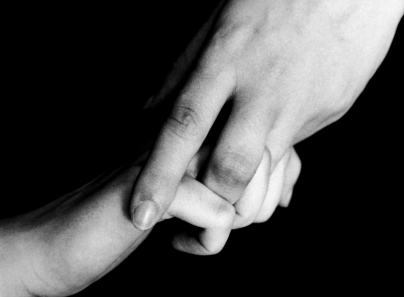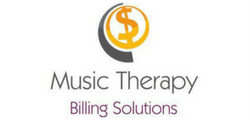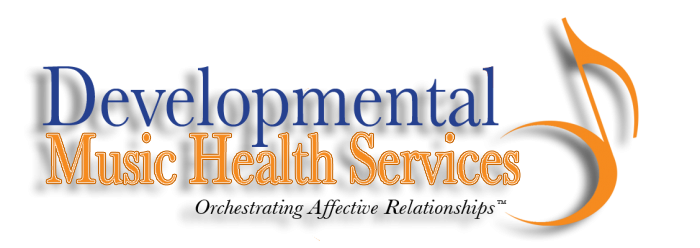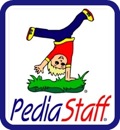I’ve been percolating on the ideas presented by Dr. John Carpente in a blog post he wrote this week in which he explores the concept of music being “used” in therapy as opposed to music being “worked in” in therapy. It’s not a new conversation—I usually read about the music AS versus music IN therapy concept—yet it’s an important dialogue to engage in as it ties into our identity as music therapists and the uniqueness of our craft.
John, you invited your readers to share our thoughts. For what it’s worth, here are mine:
First, I resonate with the concept of “working in” music. It’s a phrase I have not heard or considered before, but I like the musically interactive aspect that is implied.
The challenge for me is the dichotomous presentation of the idea of “using” music versus “working in” music. Although not directly stated, it seems as if part of the argument is that since other professionals can “use” music in their practive, we as music therapists shouldn’t. For if we “use” music in our practice, how would that differentiate our work from the work of another therapy professional?
This is a challenge as in my experience there are times when it is clinically appropriate for a music therapist to “use” music in a stimulus-response fashion. I have done so many times in neurorehabilitation settings where I have “used” and manipulated the music stimulus to facilitate, enhance, and/or direct a gross, fine, or oral motor skill. In these instances I was not the one who created the skill (i.e. goal) that needed to be addressed—that came from the physical therapist, occupational therapist, or speech language pathologist—but I was the master musician who was able to create and present the music stimulus in such a way as to maximize its effect.
My first inclination was to envision this implied dichotomy as a continuum. What if our work fell somewhere on a continuum between “using” and “working in” music? Following this idea, where we sit on the continuum at any given time could be informed by therapist personality, therapist experience, clinical setting, and client need. There’s a fluidity to the continuum concept that is attractive to me as it allows the music therapist flexibility in his or her practice based on what is needed in any given moment.
But then I got stuck on the description of “working in” music, which John writes relates to the aesthetic and relational elements of the therapeutic music experience. If we continue with the continuum concept, it follows that there may be times when there is not an aesthetic or relational component. But as a master musician, how can you create music that isn’t aesthetically pleasing—isn’t that a large part of our clinical musicianship training? To be able to create music in such a way that is functional, but also aesthetically pleasing? And what about the relational component—even when you are “using” music there is a human element involved in the experience. It may or may not directly relate to how the music experience is structured, but a therapeutic experience likely has a relational component.
So where does that leave us? Unfortunately without any answers…but what I am mulling now is the concept that perhaps “working in” music is always a part of music therapy practice. It’s always there regardless of how we are working in music. To provide a visual, envision “working in” music as a circle. And perhaps inside the circle there is a continuum of “using” music. On one end is the stimulus response model and at the other end…well, I’m not really sure what to call that, yet, but perhaps it has to do with music creation (e.g. improvisation or music making). The stimulus response end implies that the client is a passive experiencer of the music experience, whereas the music creation end implies active engagement in and, yes, working in music. But what surrounds the continuum, what envelops it is the circle, the aesthetic and relational elements of the music therapy process. You can’t take those away regardless of how the music therapy is structured and experienced.
Thoughts?



 orcid.org/0000-0001-8665-1493
orcid.org/0000-0001-8665-1493






{ 8 comments… read them below or add one }
Thank you, Kimberly, for your thought-provoking response to John’s thought-provoking post on a different blog! I am enjoying these inter-blog conversations (blog-ver-sations?).
My understanding of “working in” music has more to do with interactivity. As I understand it, it means that there is an inextricable whole in the work that cannot be understood as “X” causes “Y,” but rather as co-experiencing of “A” and co-creation of “B.” Whether or not that is a “dichotomy” is up for debate, but the two are certainly very different. Moreover, what is “clinically appropriate” may or may not fall within a MT’s unique expertise. I may find it “clinically appropriate” to do lots of things, for which my training does not specifically prepare me to do.
Yet, I am wondering: How does a MT “use” music to, as you say, “manipulate” a client’s responses? That strikes me as somewhat unusual with respect to art which (as I understand it) is a co-participatory process, not something that manipulates another person. There is certainly much fluidity and many continua in a therapist’s work–and never only one way of working. However, I would question whether it can ever be meaningful for any part of that continuum to involve manipulation of the client by using sound stimuli (which, in that context, isn’t even really music, any more than a small sculpture being used for its incidental properties as a paperweight is still being engaged as a sculpture).
Moreover, as I understand it, “aesthetic” means something much more than the act of “pleasing” (i.e., hedonia). It is about the entire range of artistic engagement, co-construction, part-whole integration, etc., much of which is anything but “pleasing.” My own training as a musician was never about “pleasing” anybody. Although standards for musicianship were high where I trained, it was about mastering certain components of musical media so that I could hear and share music as opportunities for participation in an artistic experience–and, in the context of music therapy–in a clinical experience. If it were about “pleasing” (i.e., strictly an hedonic cue or reinforcer), it would eliminate an entire realm of possible work that can be done within the artistic experience of music around difficulties, challenges, struggles, etc., and may not permit the therapist to “meet” the client where she/he actually is (which might not be in a very “pleasing” place). Furthermore, if we append the concept of “pleasing” to the argument about “manipulation,” I think we then find ourselves in a particularly strange place as clinicians.
With respect to the human relational element: There is quite a difference between a person being there during an intervention to “deliver” it with technical proficiency, and the person being part of the intervention itself. The point of a randomized controlled trial is to isolate a technical intervention so that it is free extra-interventional “confounds,” such as the human relationship. The idea is that it is the technical intervention INDEPENDENTLY of the relationship that “works.” That is certainly appropriate within certain clinical disciplines wherein the point is to deliver a technically effective stimulus or other set of conditions that “work.” But in those cases, the fact that there is skilled, technical manipulation of the stimulus does not mean that the relational dimension is PART of the “working” itself…it is only incidentally present, no matter how “nice” the one delivering the stimuli happens to be. That is different from “working in” with the therapist, wherein the therapist is inextricable from the actual “workings” of the change itself.
Yes, I agree that the stimulus response model does imply that the client is a passive experiencer of the music experience. But I don’t think has to do with the question of receptive (listening) vs. productive (re-creative/compositional/improvisational) forms of music experience. For example, when I do GIM, the client is most certainly NOT a passive experiencer. The client is actively doing something with the opportunity of the recorded music. And I am certainly not manipulating the client’s responses, as the GIM therapist. I am providing opportunities, with outcomes that cannot possibly be predicted (by me or by any statistical model). 1000 clients can have a similar image when I play a piece of music–yet that does not make it any more likely that the 1001th client will have that same experience. In relation to the music as art (versus as sound stimuli), each client retains her/his own agency with respect to what she/he DOES with the music, and that IS, in fact, at odds with a model that predicts client response based upon any specific, technical intervention.
I understand that you are saying MTs can be both technical manipulators and opportunity providers, simultaneously. However, at a certain point, we have to ask ourselves where we stand on the matter of how we view what a person experiencing music means: A being with the agency to determine how she/he experiences the music (and what they may do or not do, in response to that music); or as complex organismic objects with predictable responses to music understood as a sound stimulus (which, when we consider certain dimensions of music, such as its soundless manifestations, we run into a bit of additional theoretical trouble).
Hi
Like Brian, I would like to thank you for your thought-provoking response to John Carpente’s post on a different blog. As I read you post the following statement struck me: “it follows that there may be times when there is not an aesthetic or relational component.” I can’t ever imagine a time when this would be true. My understanding of aesthetic in music therapy is based on the notions presented by Ken Bruscia in Defining Music Therapy. As he states, “The beauty of the msuic lies beyond its surfaces and structures, it also emantes from the soul.” In my opinion, there is an aesthetic beauty to all music that is co-created within the context of a therapeutic relationship. I have listened to several excerpts from Nordoff-Robbins, where perhaps the trained ear, or master musician as you state is not able to find an aesthetic component. As a music therapist, I would hope we would see the beauty or aesthetic in the process not necessarily the product.
From my understanding of music therapy, it is a relational therapy, music therapy involves the relationship between the client, music and therapist. At times the client-music relationship may be primary, other times the client -therapist relationship may be primary, but with the relational component it is not music therapy.
Kathy, I completely agree! Thank you for validating and expanding upon my point that you cannot remove the relational or aesthetic component from the music therapy experience. I appreciate you taking the time to share your thoughts and opinions here. ~Kimberly
I’m glad to see there is agreement on the inextricability of aesthetics and relationship from MT. However, I am still somewhat unclear on several points. If “aesthetic” means something more than a “pleasing” hedonic incentive or reward, and is a relational, co-constructive process (that is not necessarily “pretty”), how can that be reconciled within a stimulus-response paradigm? And, if relationship cannot be separated from music therapy, where is the role of relationship in the technical link between stimulus and response? Again, if the stimulus “works,” shouldn’t it be effective with or without any extraneous factors, such as the human relational elements? If relationship isn’t actually PART of what actually works in MT, then wouldn’t it be analogous to the role of relationship in helping a patient into an MRI? Sure, a human being may need to help the patient into the MRI, but the relationship has nothing to do with how the magnetic interaction with biological particles actually “works.” It may play a peripheral role, but is not part of the explanation for the actual phenomenon itself. Thank you for any further clarification on this.
Kim thanks for your response, though I am confused. In your origina post you suggest that there may be times when there is not an aesthetic or relational component. Yet you are agreeing with my post in which I refute that claim. I cannot concieve of an instance in music therapy where there is not an aesthetic or relational component. so I am wondering where exactly are you postioning yourself with music therapy?
Kathy, I think perhaps you misread my post? Or may I was not clear—apologies if the latter. The next couple of sentences following the one that concerns you refute that “claim.” They describe a train of thought that shows why the continuum concept doesn’t work for exactly the reason you and I both believe—you cannot NOT have an aesthetic or relational element to the music therapy. The remainder of the post offers an alternative to the continuum concept. Does that make sense? ~Kimberly
Kimberly,
First, thank you for the complement in spelling my name, “Brain” (I take that as an affirmation of my intellect, not as a comment upon my appearance which, if you were not such a kind person, would be entirely plausible!).
Thank you for the clarifications on your positions here. And I would be happy to discuss this in person, anytime. However, since you took the time to “import” John Carpente’s blog post on to your own, presumably in order to facilitate a public discussion here, I am following up in kind.
I appreciate your re-phrasing, “But as a master musician, how can you create music that isn’t an aesthetic experience—isn’t that a large part of our clinical musicianship training? To be able to create music in such a way that is functional, but also artistic?” I think we are in agreement that there is no such thing as non-aesthetic music therapy (in other words, it would cease to BE music therapy, were it non-aesthetic).
Where my confusion remains is in the location of the client within the configuration. You write that, in the context of neurorehabilitative MT, “My unique expertise as a music therapist in this context is being able to structure the music stimulus to enhance the entrainment and to change the stimulus to meet the client’s needs in that moment (e.g. change the tempo, dynamics, harmonies, etc.).” My question, then, would be: If this is truly relational, then where, exactly, is the client? Is the client only a response organism that responds in predictable ways to technical interventions? Or, is the client making decisions/choices (whether in a conscious, cognitive way, or in some other way that we still consider to be the client’s own human agency)? Are you providing stimuli to “cause” responses in the client, or are you providing clinically-appropriate opportunities, that the client may experience and wield in any number of ways?
Again, thank you for taking the time to respond.
Brian “the brain” Abrams
Hi Kimberly, Brian, and Kathy,
I’m sorry that I’ve joined the group a bit late. Thank you all for taking an interest in this topic and sharing your thoughts and perspectives. I feel that this topic, although not new, is an ETREMELY important conversion!
In an effort to not repeat what the three of you have already said, I will try to answer and/or add to some of the questions that Kimberly initially brought up.
My intention was not to imply that music therapists shouldn’t or should “use” music in their practice. My intent was simply an attempt to define or identify two ways in which music is located (used or worked-in). For me, I feel that ne cancels the other and that one can not “work-in” and “use” music. That being said, I find it difficult to differentiate an MT using music from other disciplines that “use” music. The way I understand it, is that I do not see a difference between an MT using music for speech-based goal and a speech therapist doing the same thing. In fact, I would even say that the SLP is more qualified to “use” music for a speech-base goal then the MT because it’s (the response/outcome) within their scope of practice. Music for them is viewed solely as a stimulus. Thus, the aesthetic or relational experience is not important. What’ is important, as I see it, is that the stimulus targets a specific behavior. Therefore, the client is conceptualized as his/her behavior. The music can be anything. In other words, the music can be replaced with any external reward.
I feel, when working-in music, that there is always a relational and aesthetic experience within the music event, regardless of the method (ie. Improvisation, pre-composed, songwriting, receptive). The aesthetic and relational experiences, or components, are intertwined within the music experience and are continuously informing one another throughout the musical-clinical process. This becomes a dynamic process that involves client and therapist. When “using” music, in my opinion, however, the process is not about music, relationship, or aesthetic. It’s not even about a process. It’s solely about the product (response/end result). Thus, the experience of working-in music, as well as the moment-to-moment interactions, are not valued as being therapeutic components. In other words, the journey and the experiences that accompany the “working-in” experience are not the clinical focus.
I agree with Kimberly that this conversion would be so much easier in person then via typing! So until we meet in Kentucky, thanks for the exchanges!
All the best,
John
You must log in to post a comment.